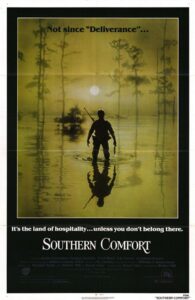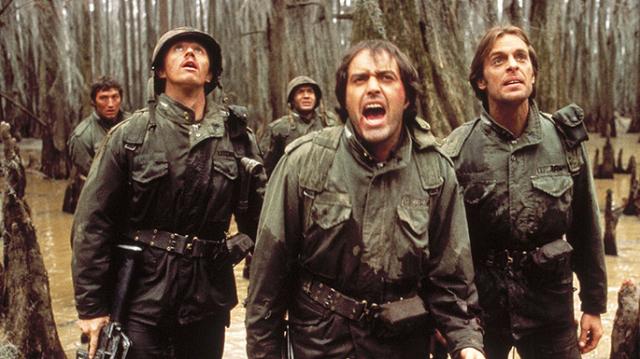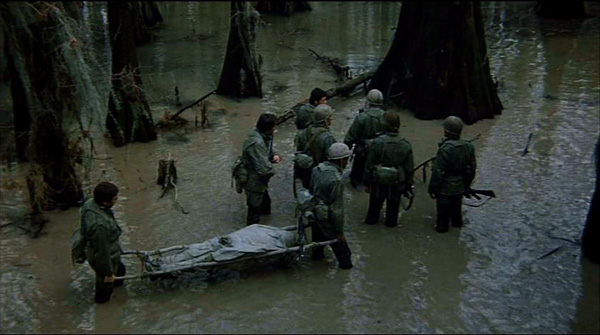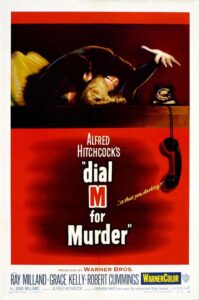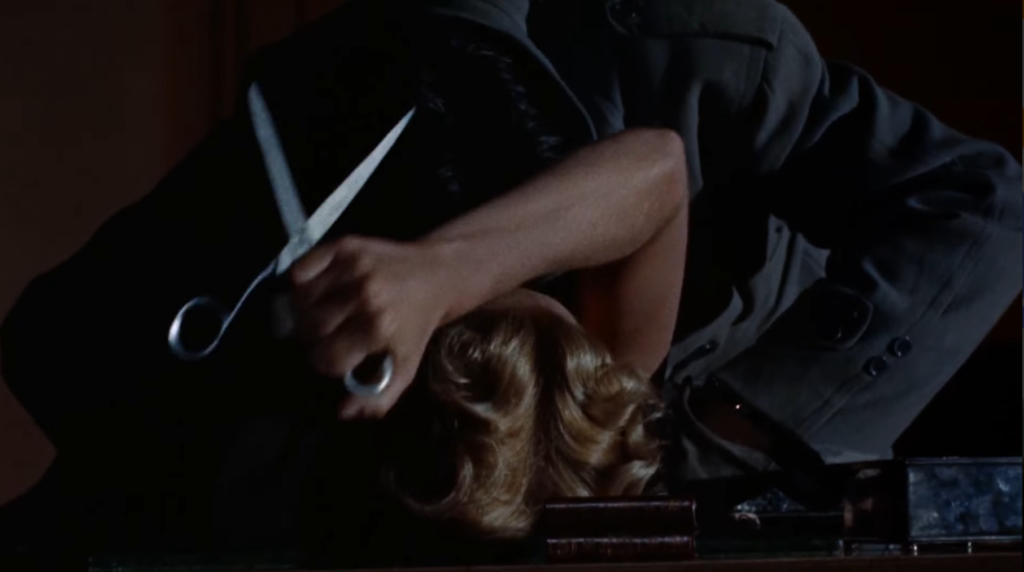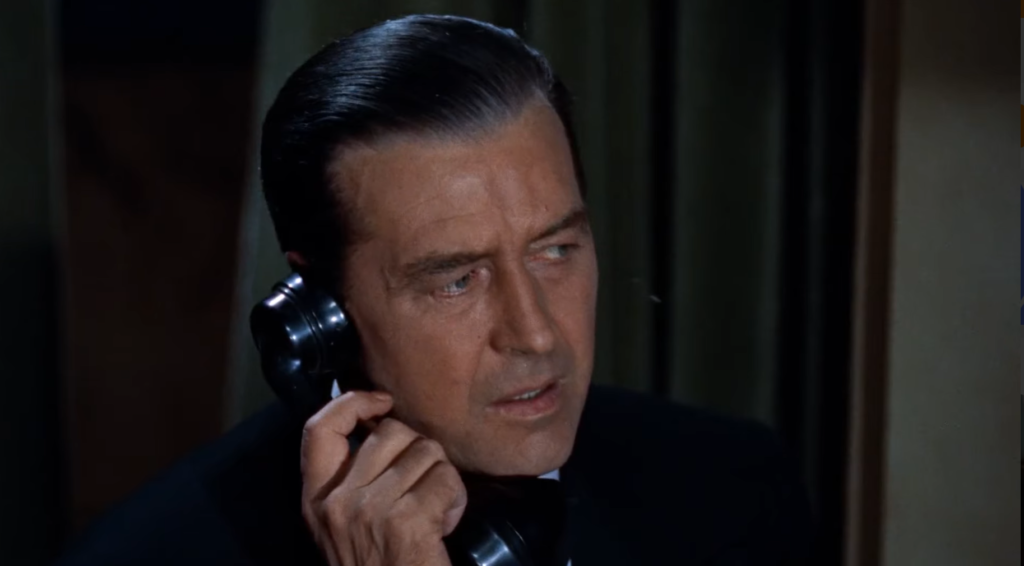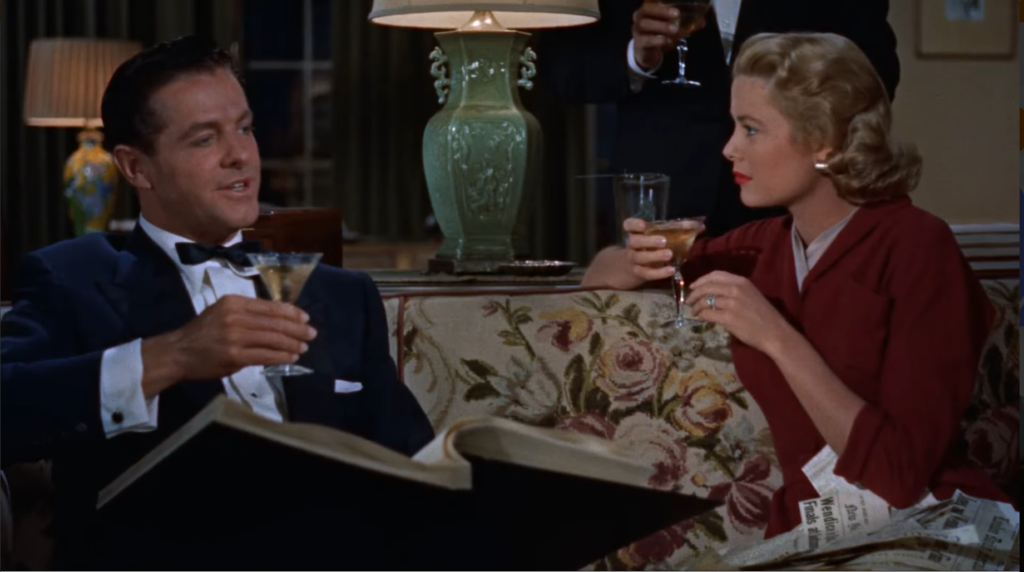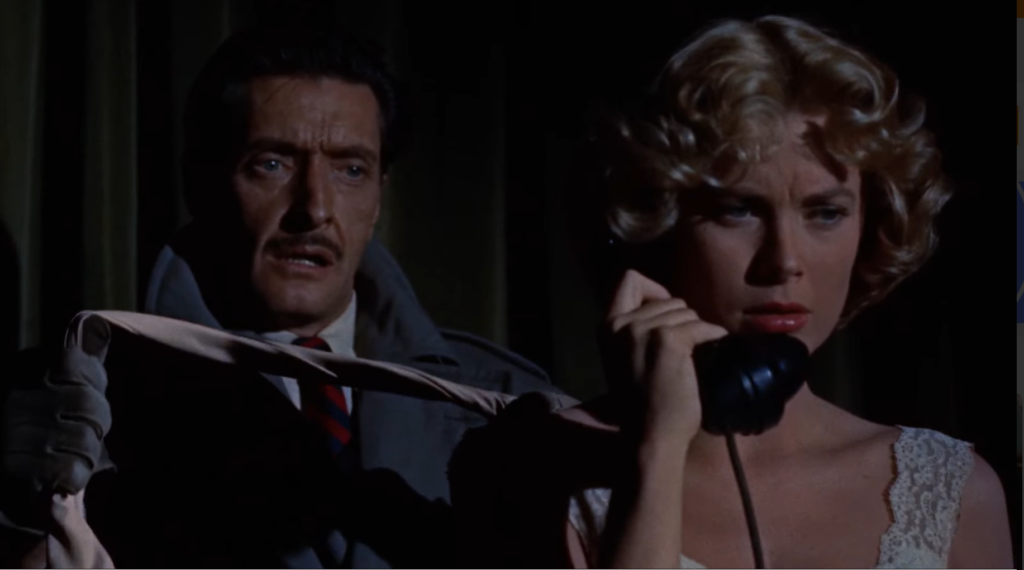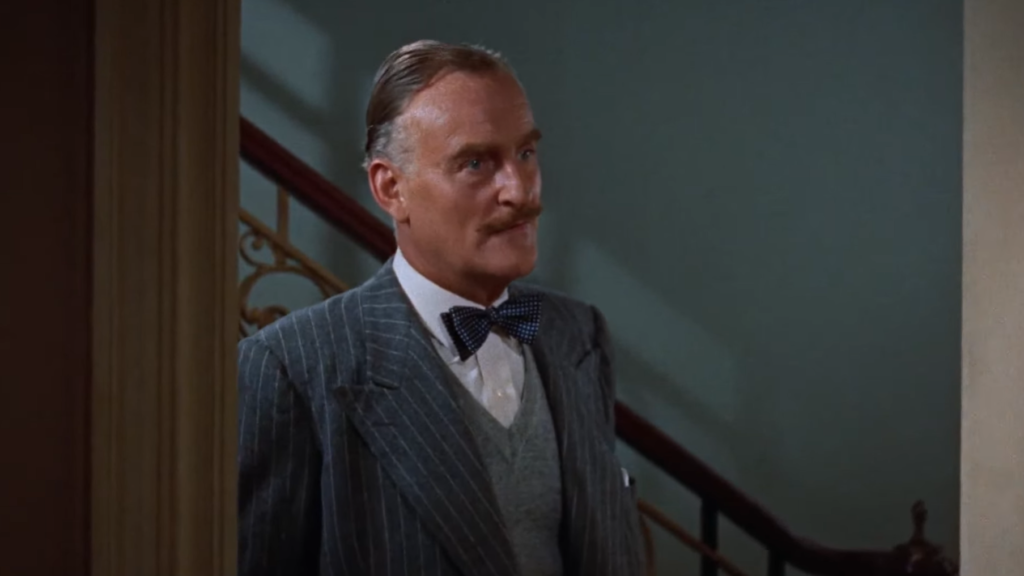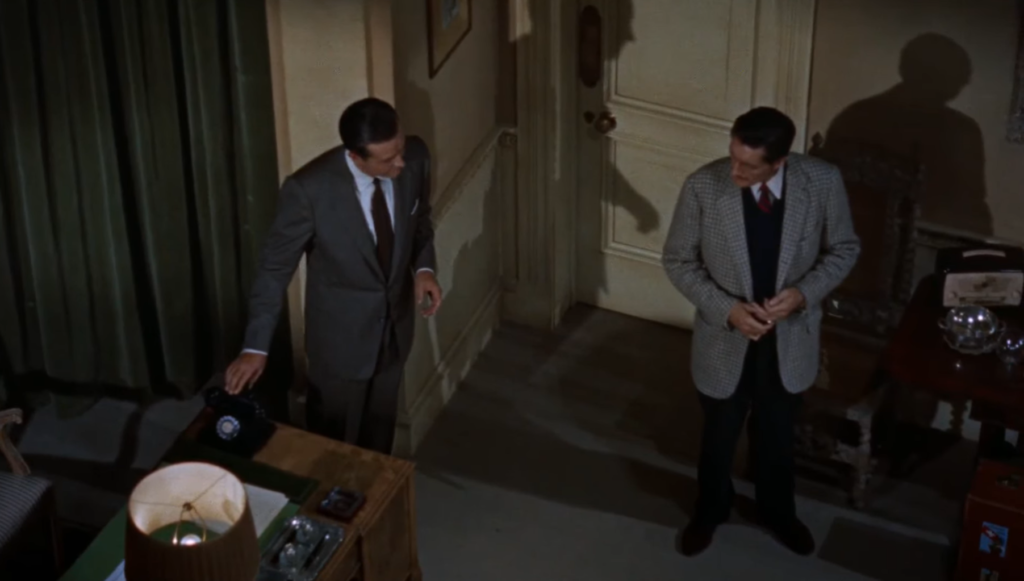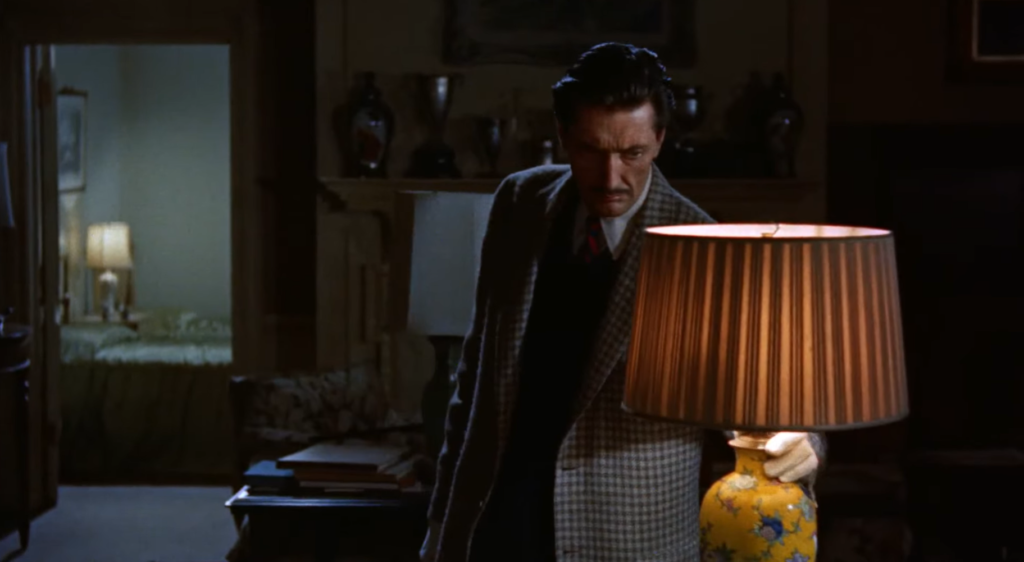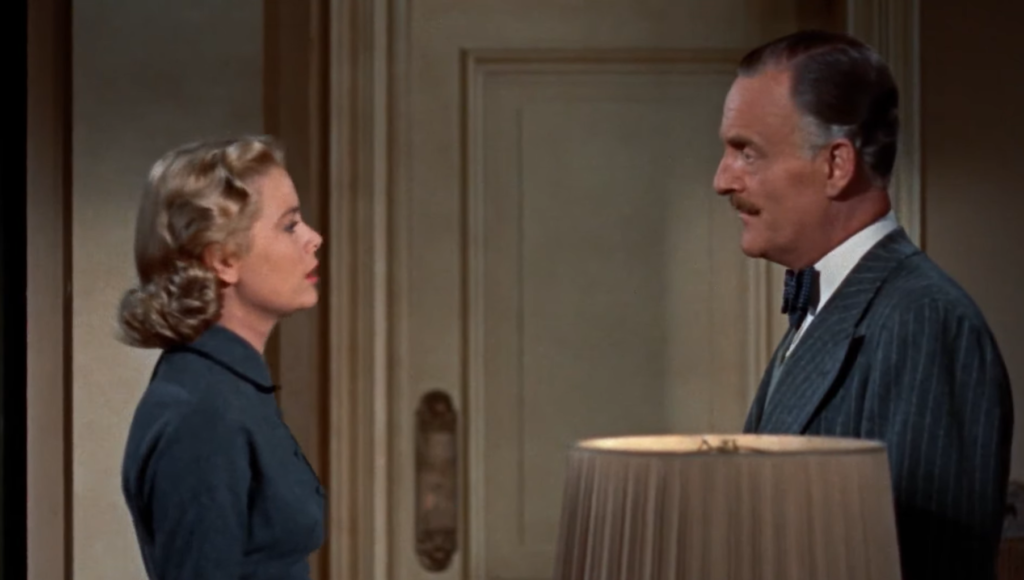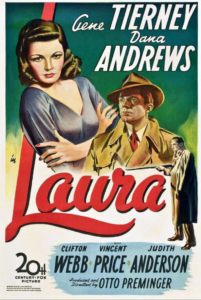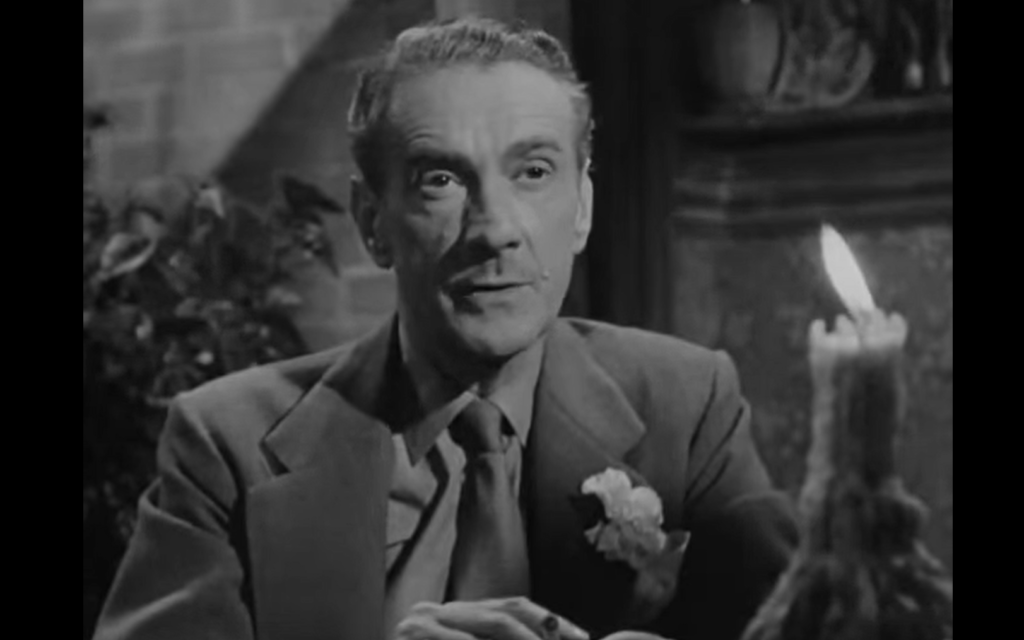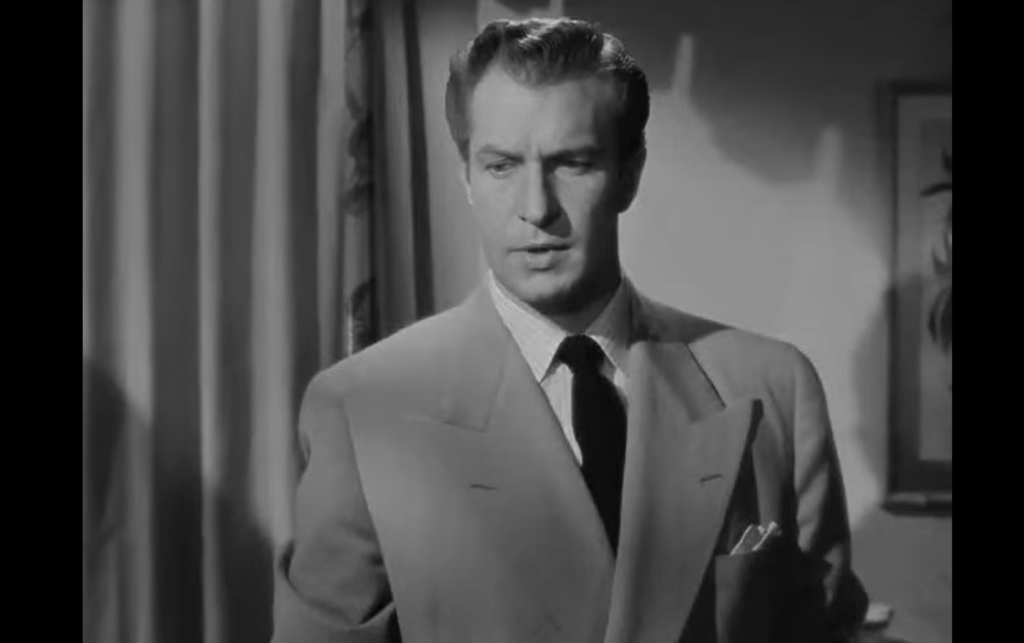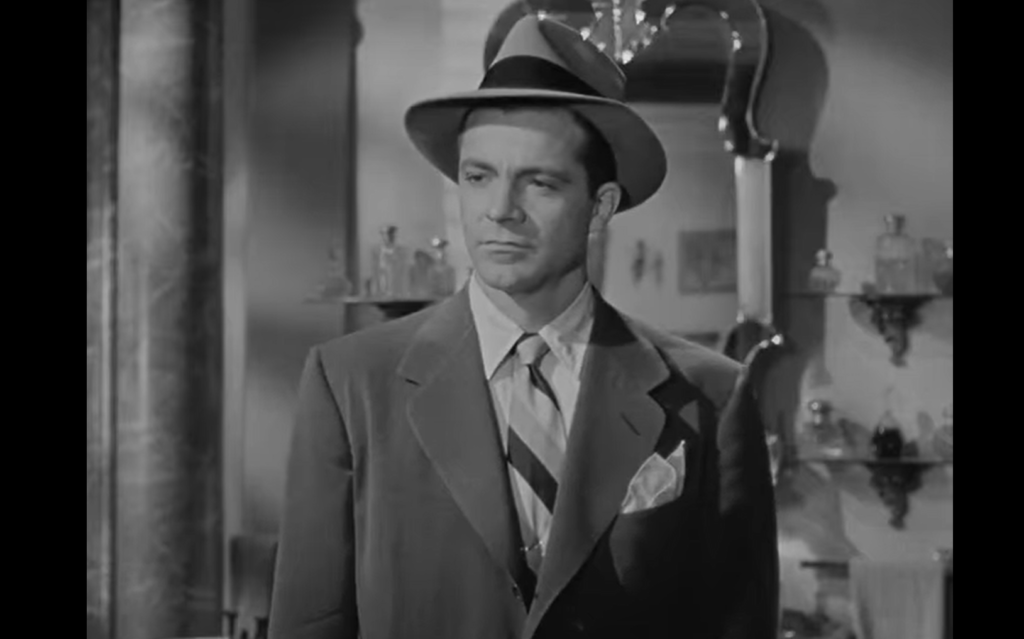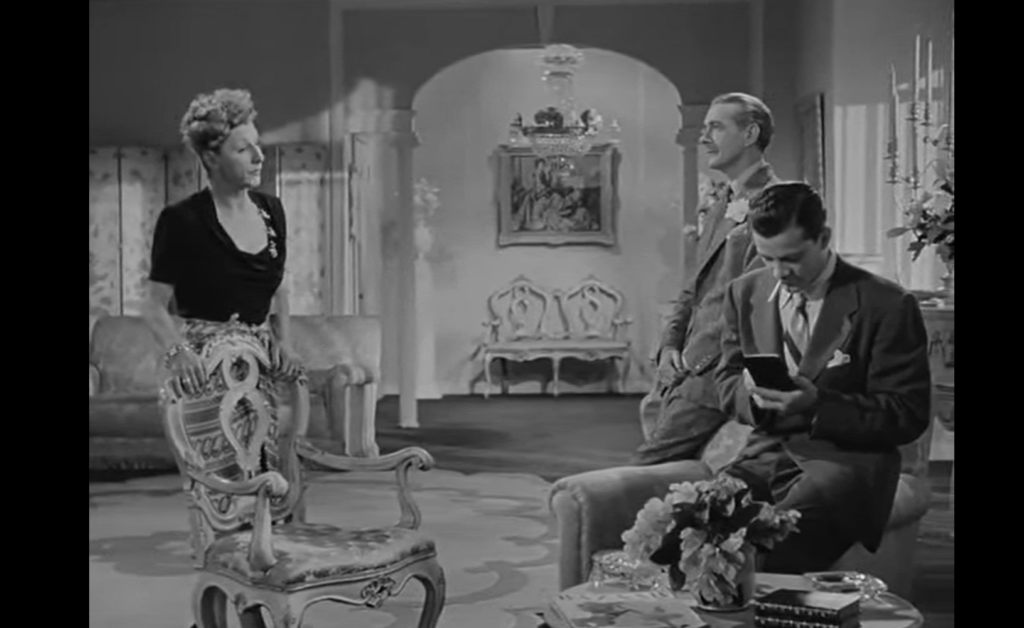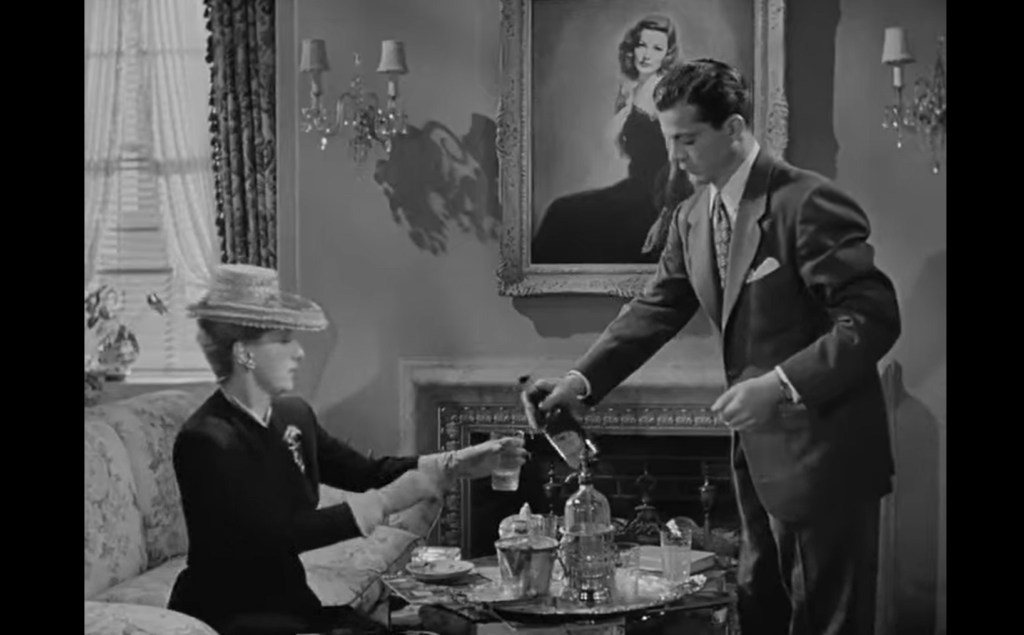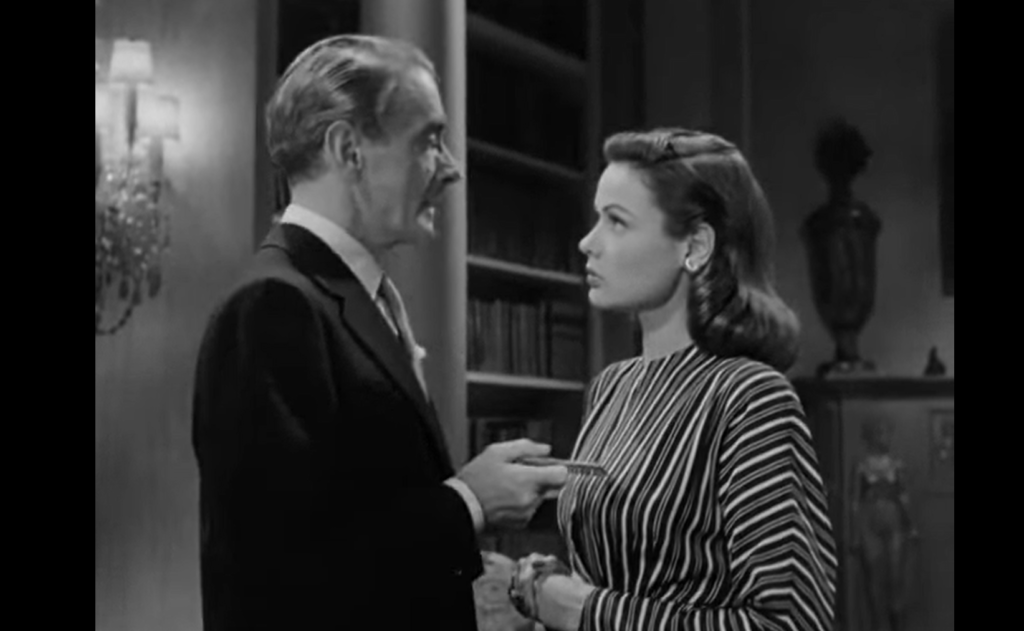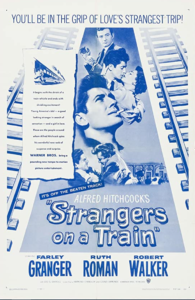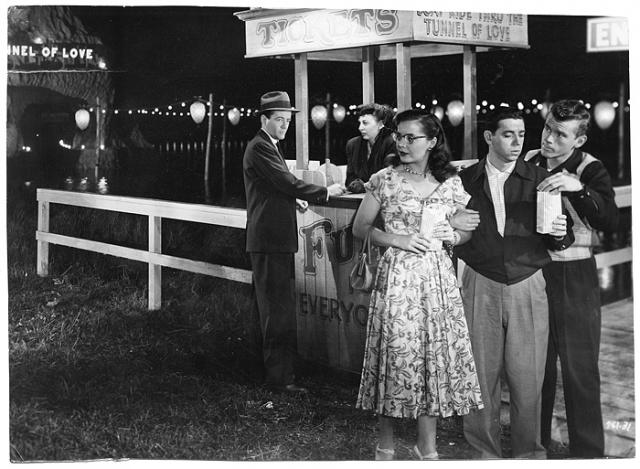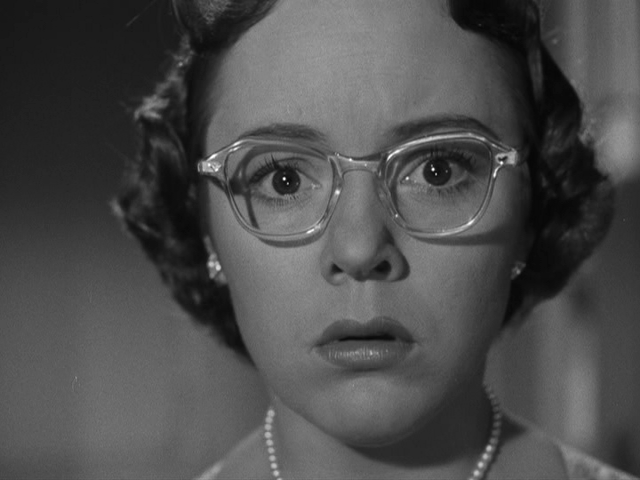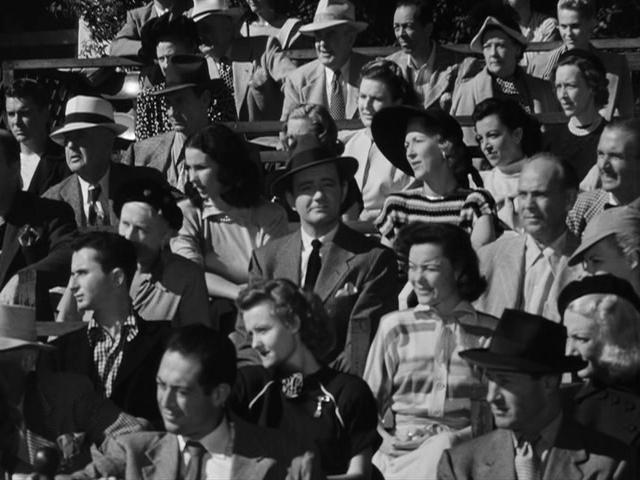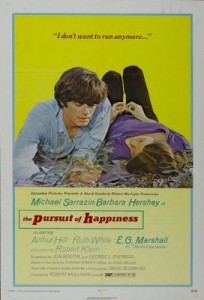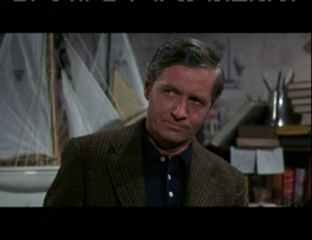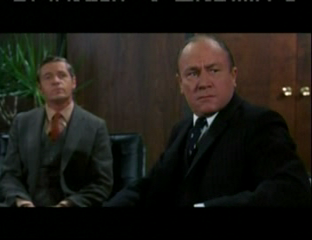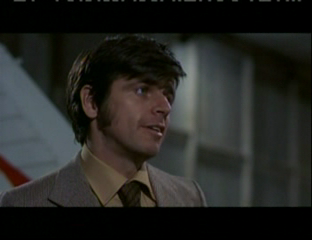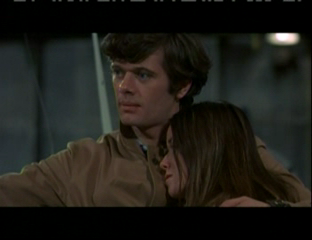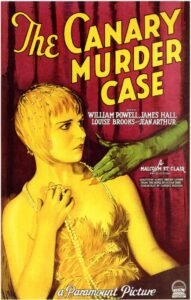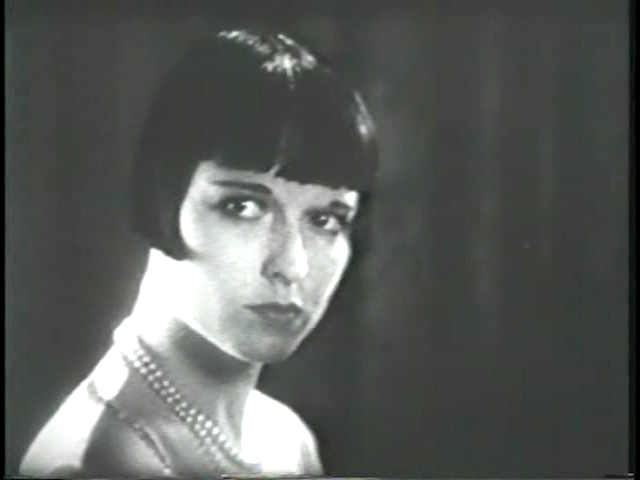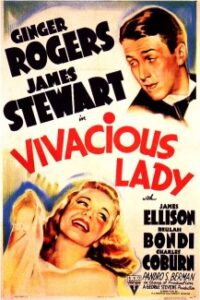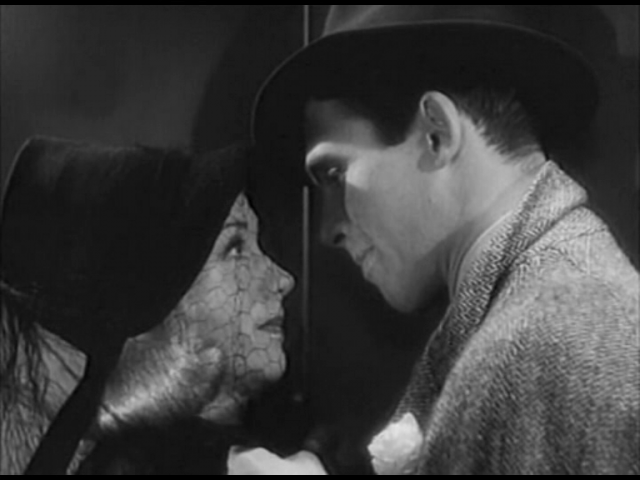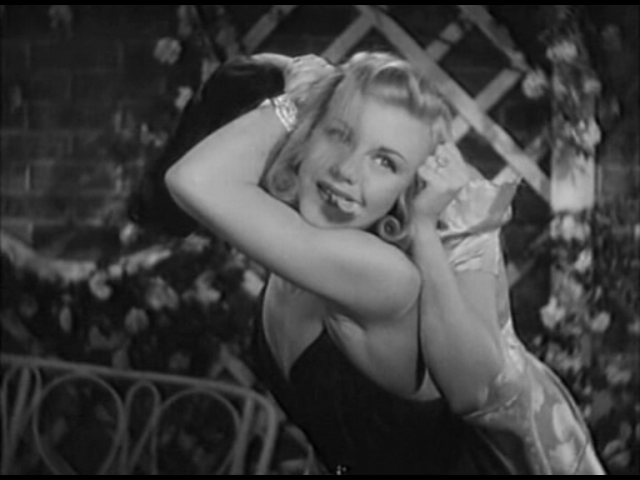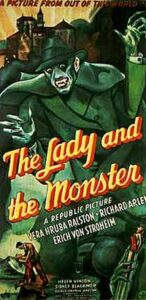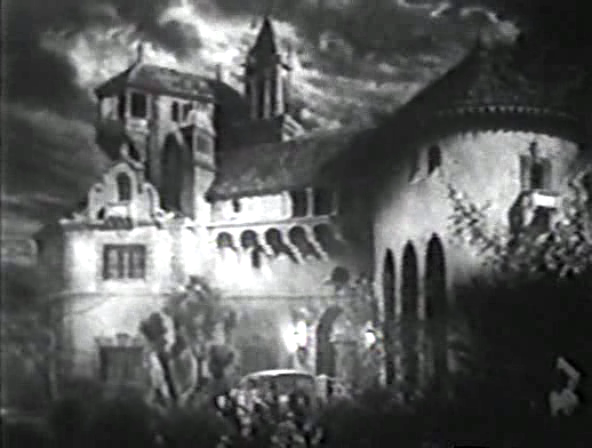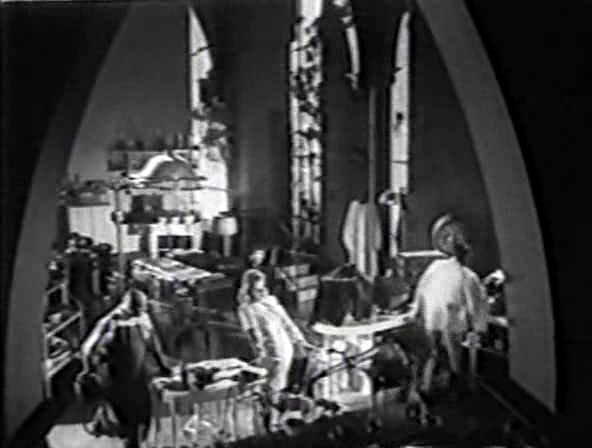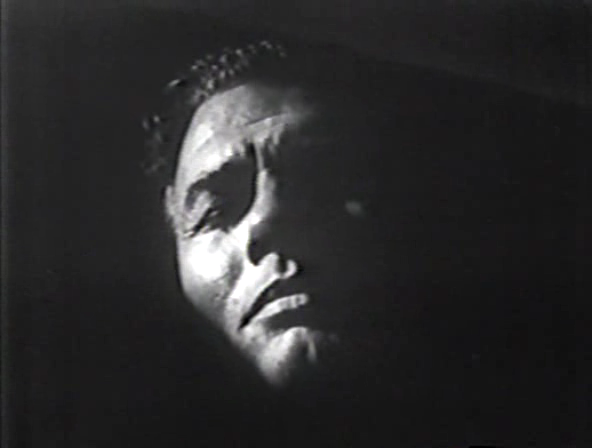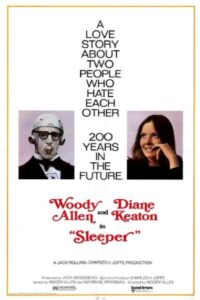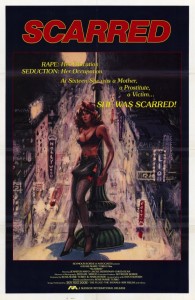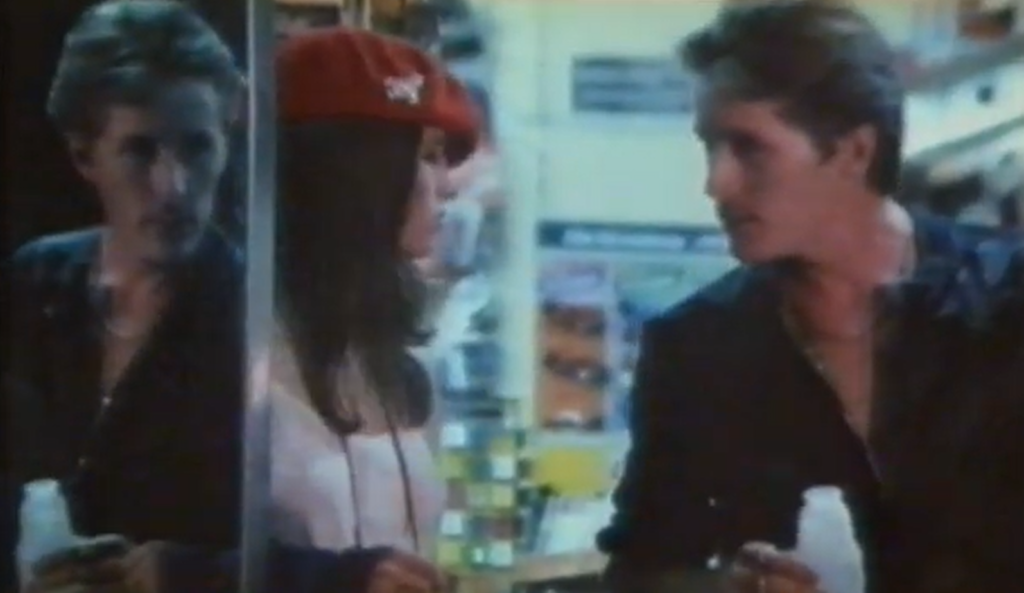|
Genres, Themes, Actors, and Directors:
- Character Arc
- Comedy
- Diane Keaton Films
- Revolutionaries
- Robots
- Science Fiction
- Time Travel
- Woody Allen Films
Response to Peary’s Review:
Peary seems only mildly enthusiastic about this “silly but enjoyable” early satirical comedy by Woody Allen; he argues that while there’s “much hilarity”, many of the “gags and slapstick don’t work”. However, I’m hard-pressed to figure out exactly what ‘clunkers’ he’s referring to, given that Sleeper is an all-around anarchic delight, full of diverse humor ranging from inspired slapstick (in a garden of giant produce, Allen — naturally — slips on an enormous banana peel):
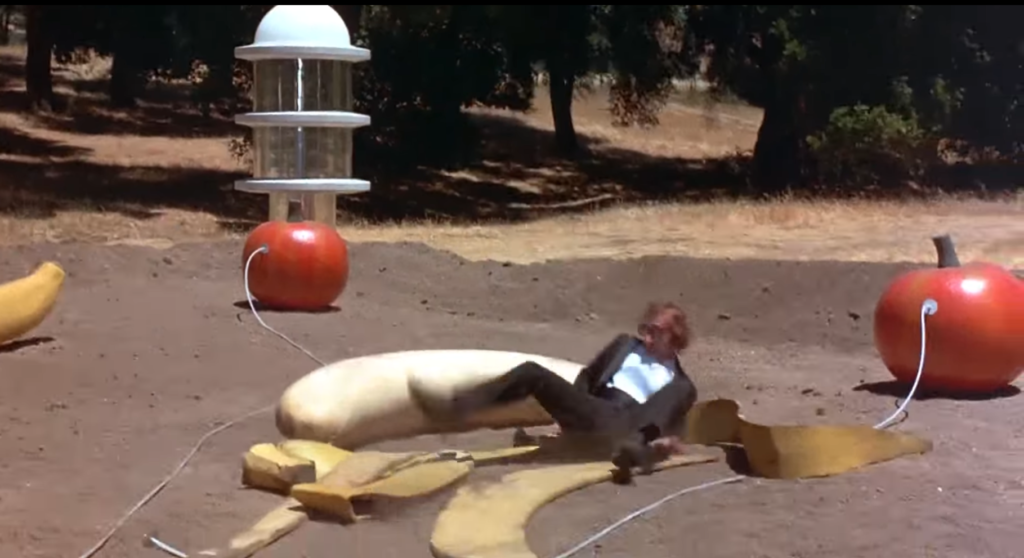
… to timely satire (when shown a photo of Norman Mailer by an inquisitive archaeologist, Allen informs him that Mailer “donated his ego to Harvard Medical School”):
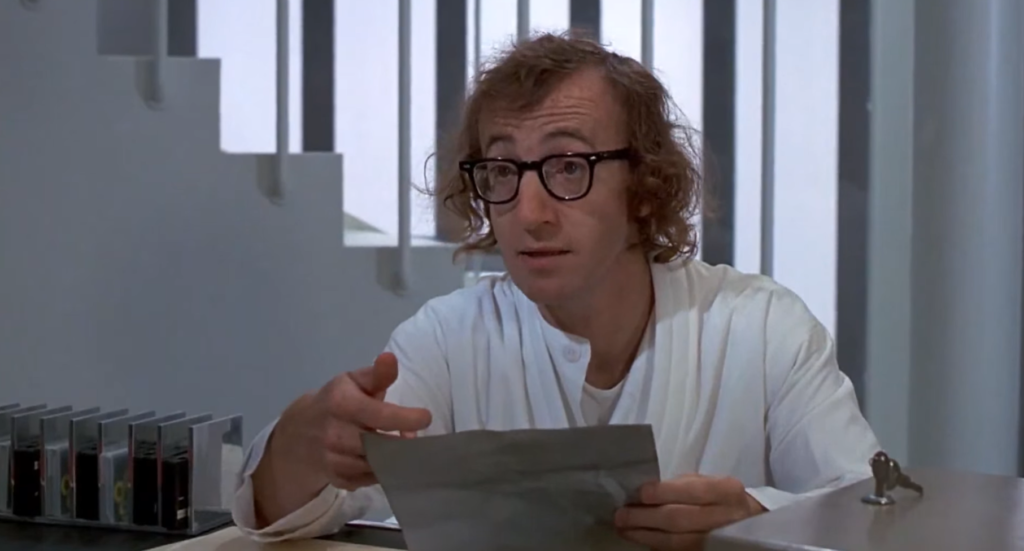
… to mind-blowing lunacy (Allen wins a Miss America award [!]:
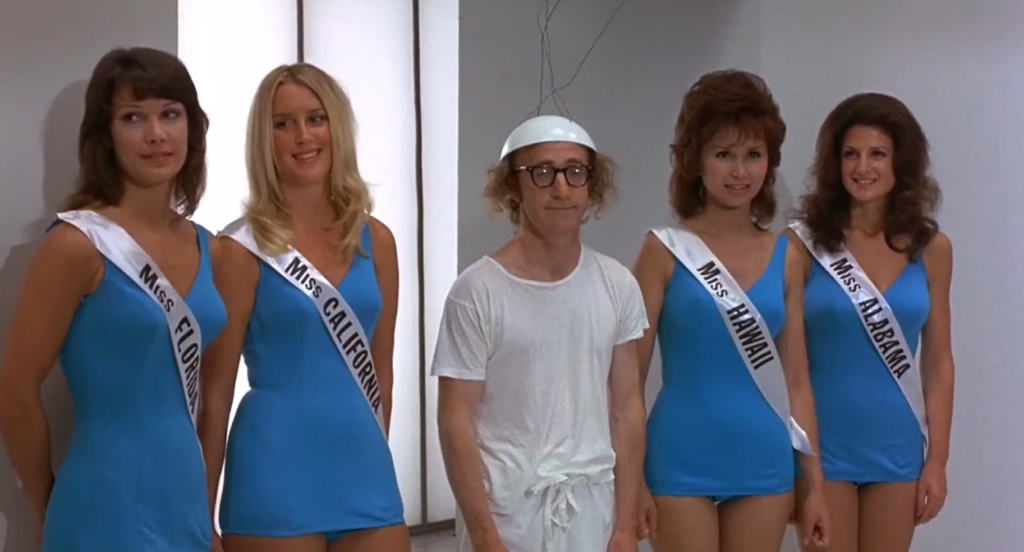
… and later — oh, so randomly — channels Blanche DuBois in a scene from A Streetcar Named Desire).
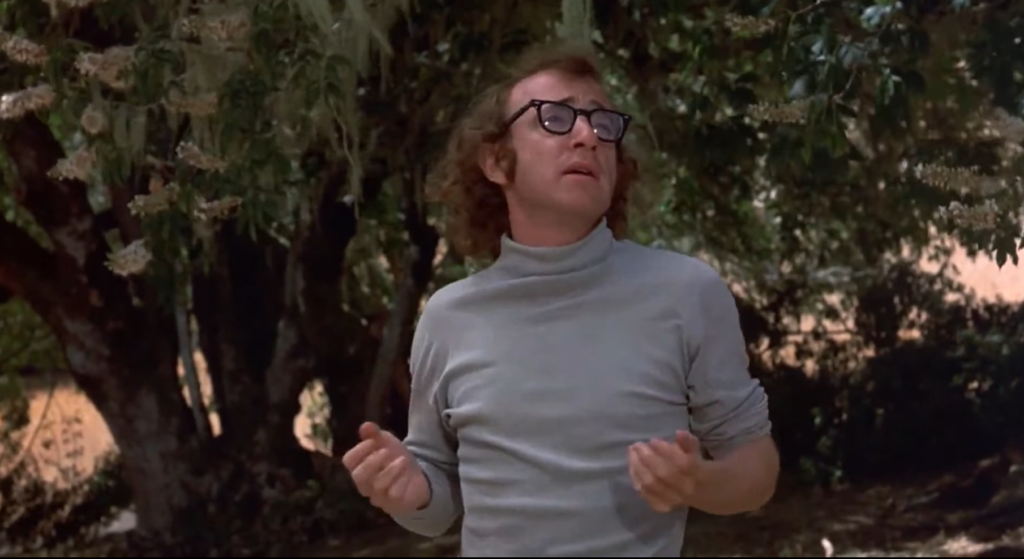
For such a silly story, Sleeper is surprisingly full of memorable moments: few will be able to forget the botched “nose cloning” sequence near the end of the film, for instance:
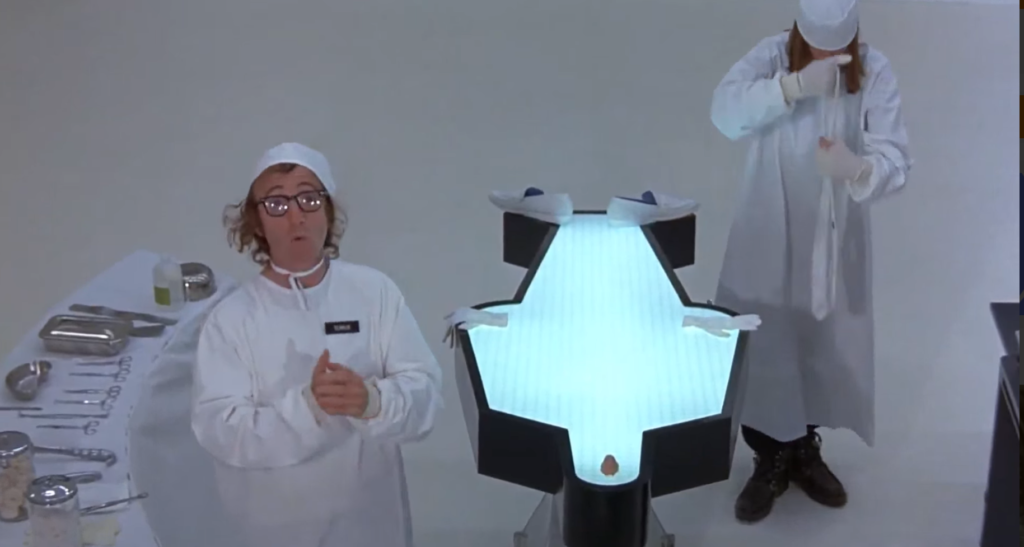
… or the movie’s coterie of futuristic “gadgets” — including the efficient Orgasmatron box:
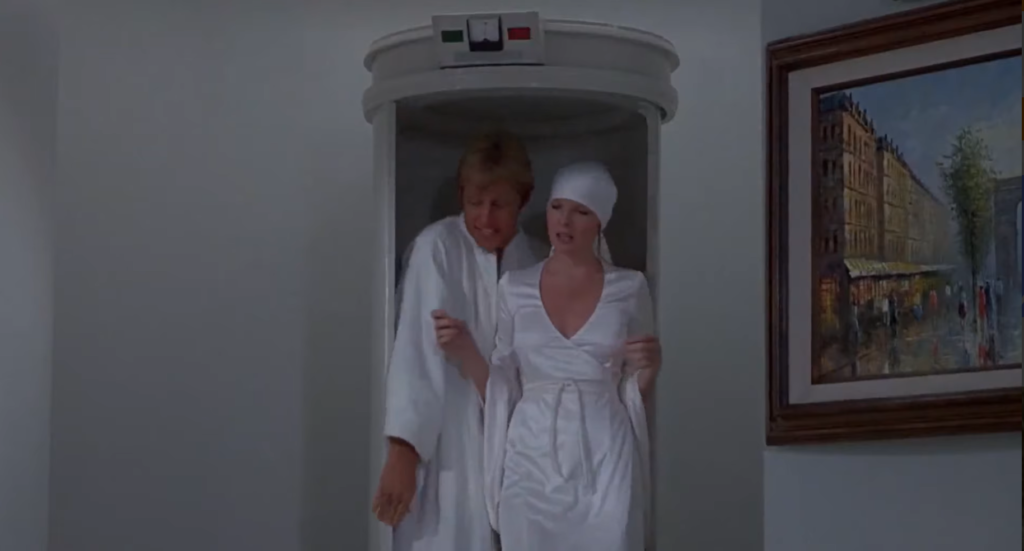
… the drug-providing “Orb” (which provokes Allen into a rare fit of laughter on-screen):
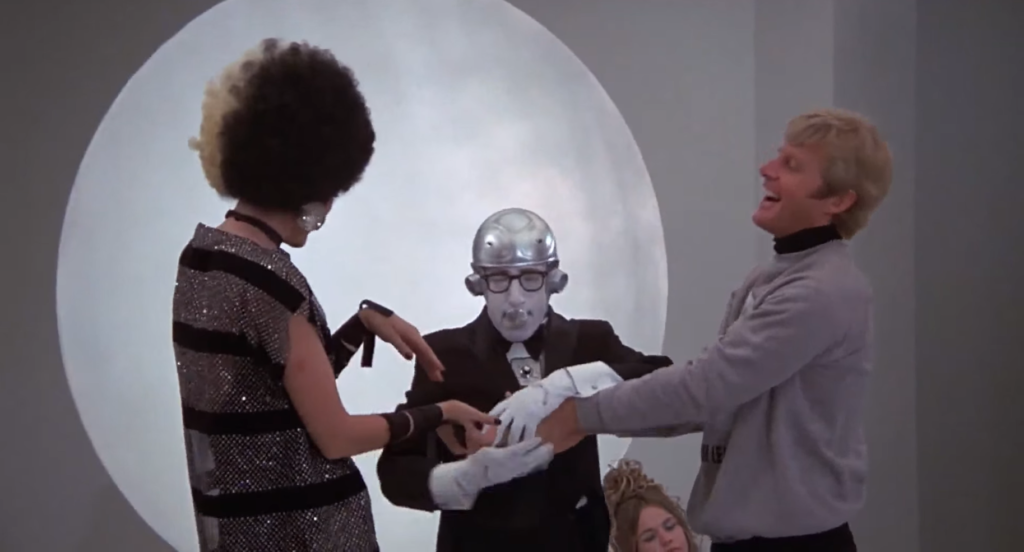
… and some instant chocolate pudding powder which quickly grows out of Allen’s control.
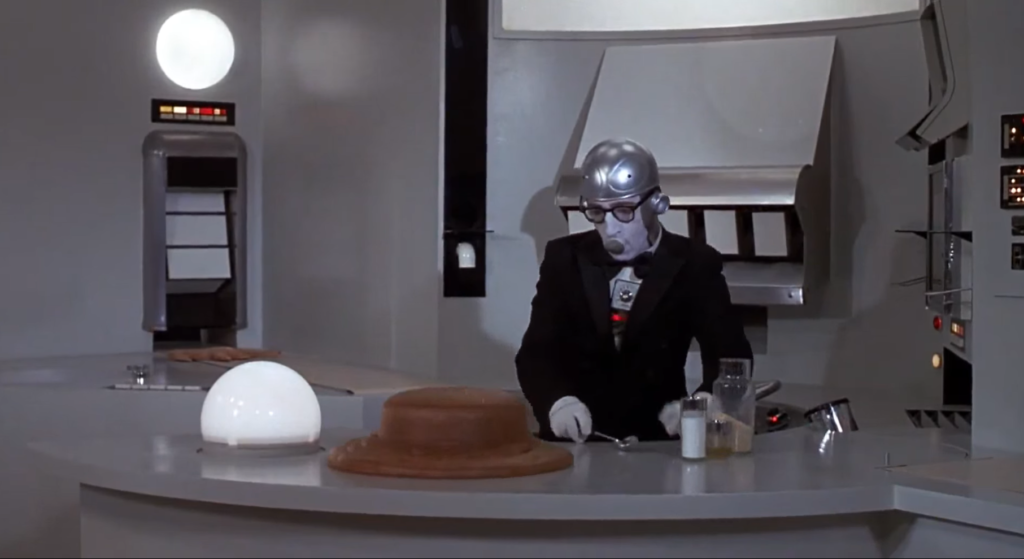
Though most of the supporting actors are unknowns, Keaton — in her second film with Allen, after Play it Again Sam (1972) — is charmingly nutty as Allen’s foil and love interest, who undergoes a dramatic transformation from squealing hedonist to committed revolutionary:
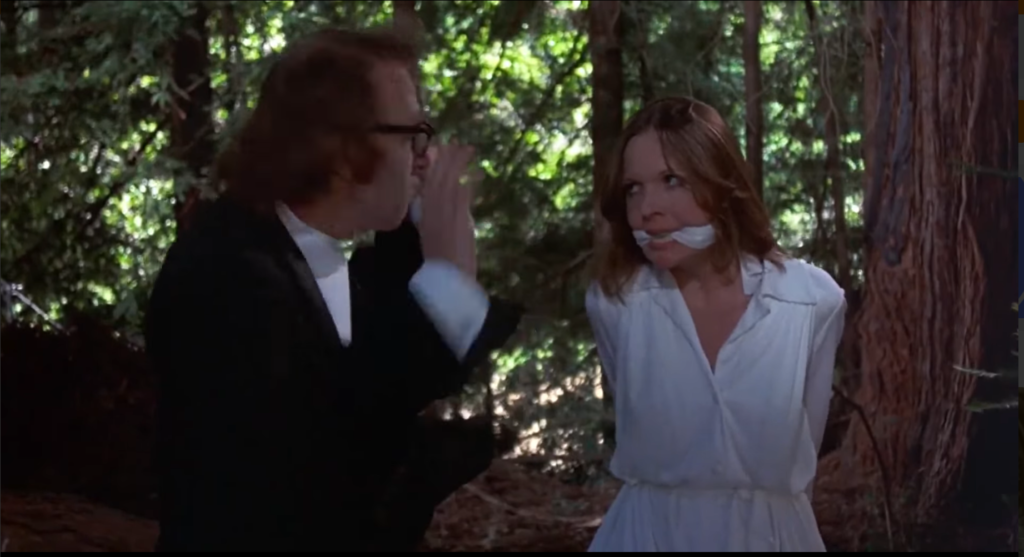
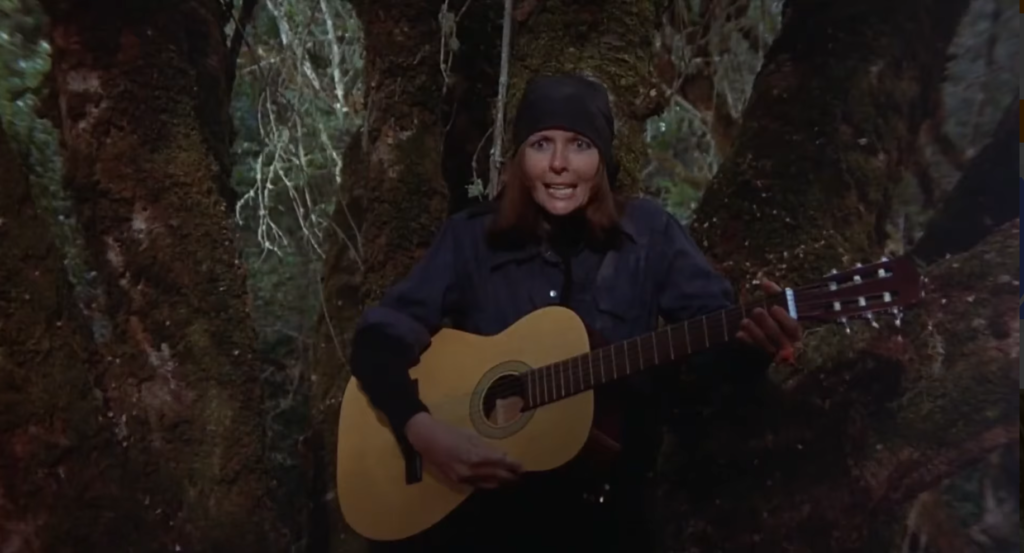
Meanwhile, Allen himself has loopy fun channeling Buster Keaton, Charlie Chaplin, and Bob Hope (among others). Like the best must-see films, Sleeper — which, mercifully, never takes itself too seriously — can easily be revisited by film fanatics from time to time, and is the perfect introductory Allen movie to show to one’s non-ff friends.
Redeeming Qualities and Moments:
- Countless randomly hilarious sequences
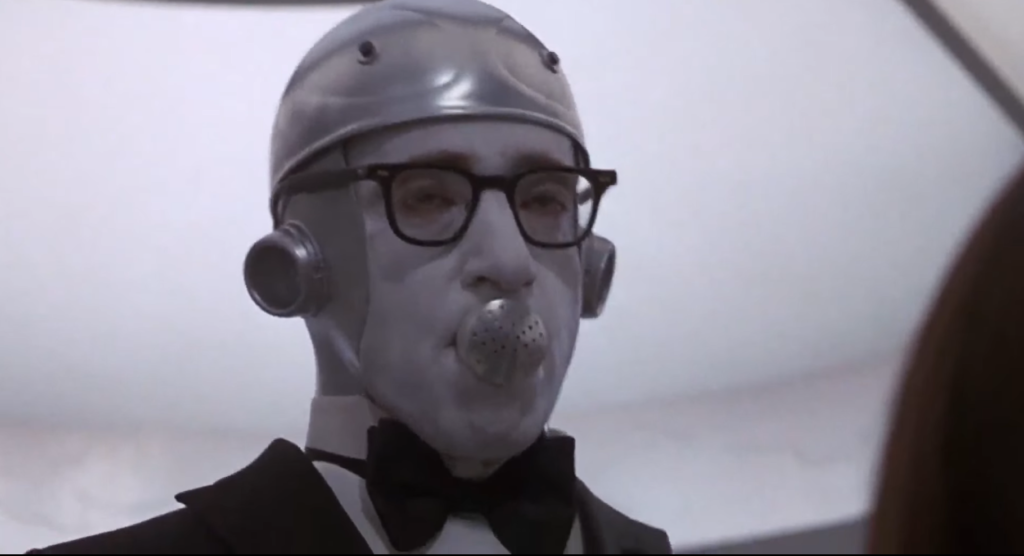
- Plenty of classic Allen one-liners:
“My brain! It’s my second favorite organ!”
Must See?
Yes, as a comedic classic.
Categories
(Listed in 1001 Movies You Must See Before You Die)
Links:
|
